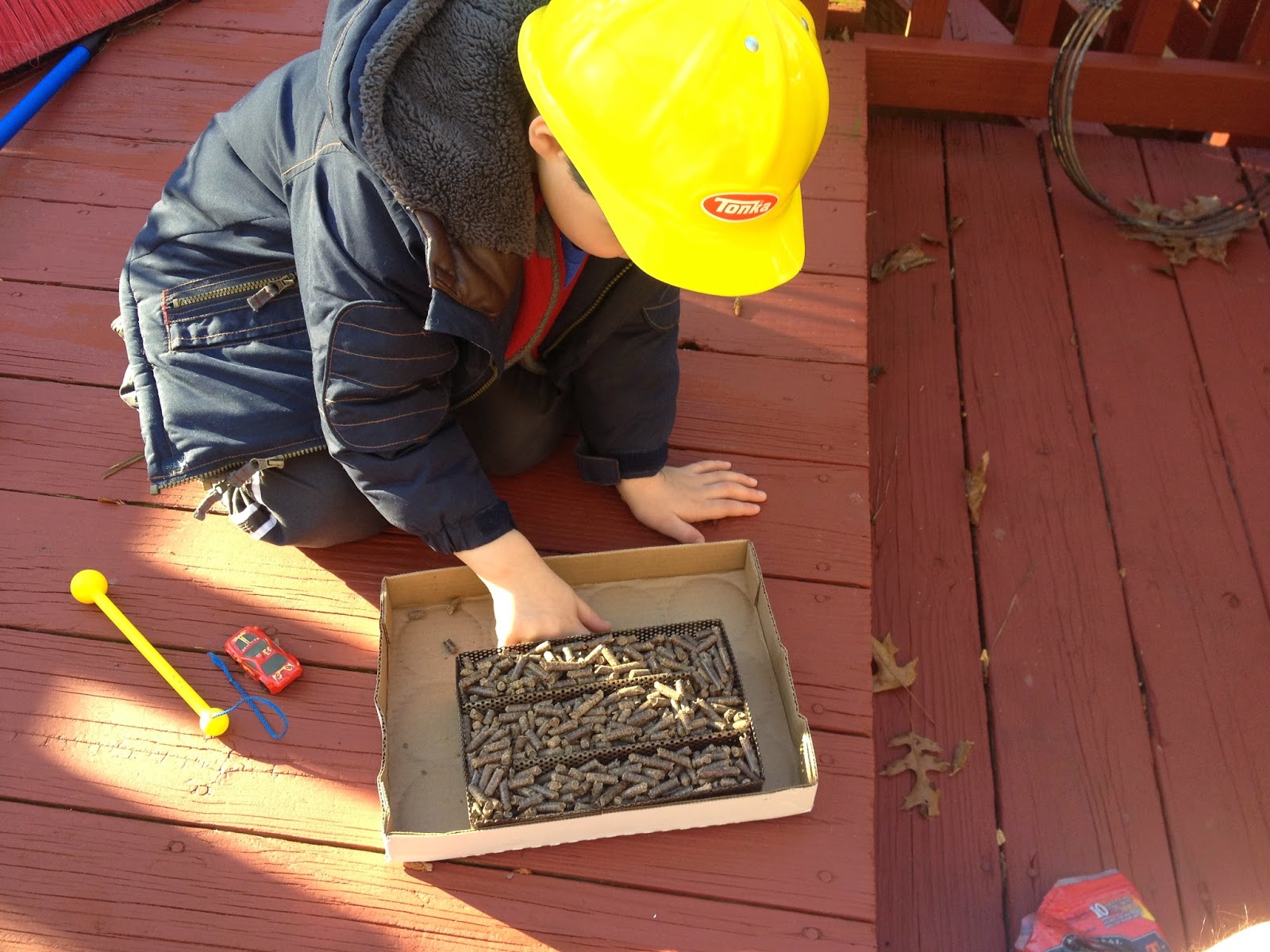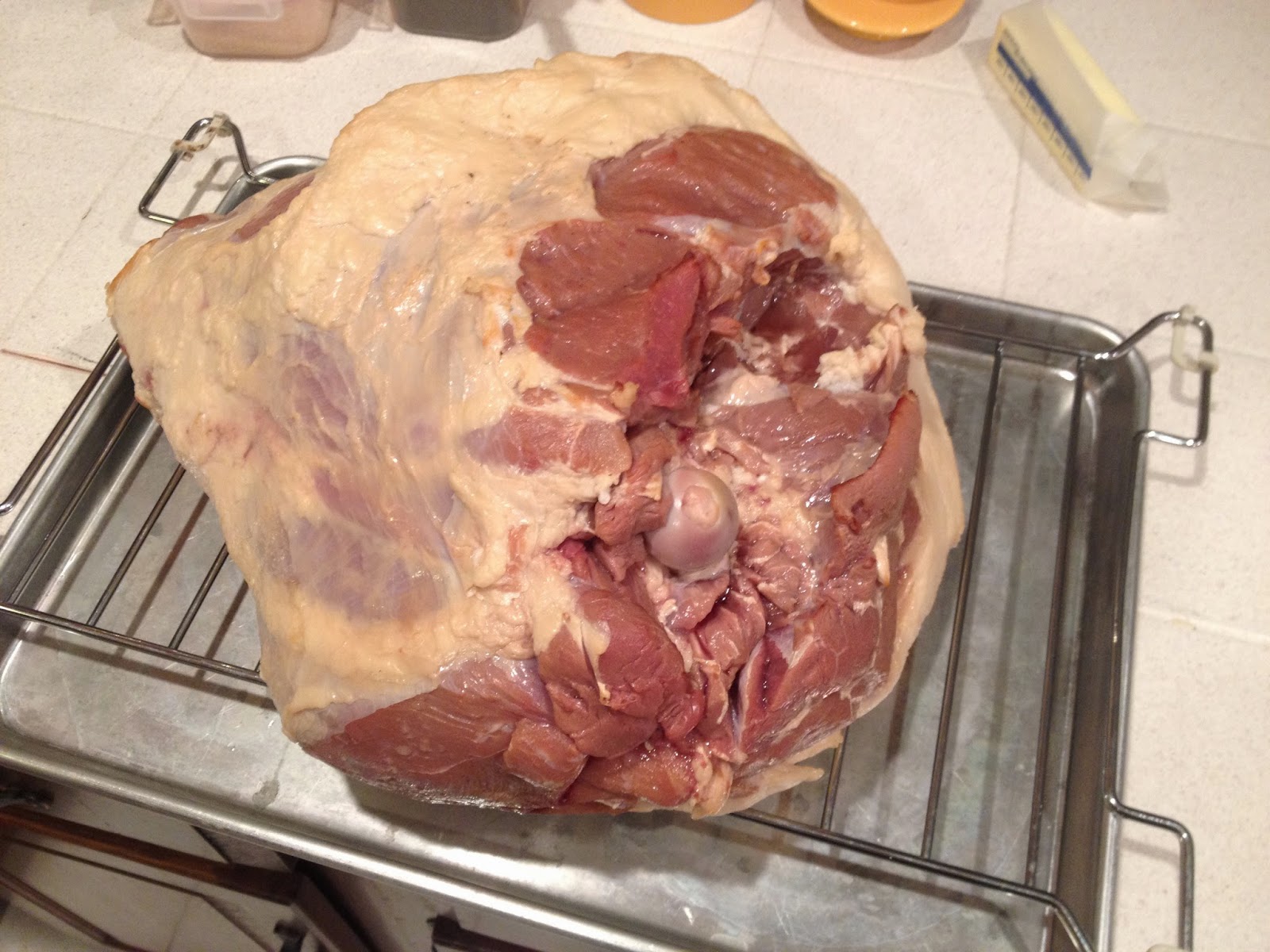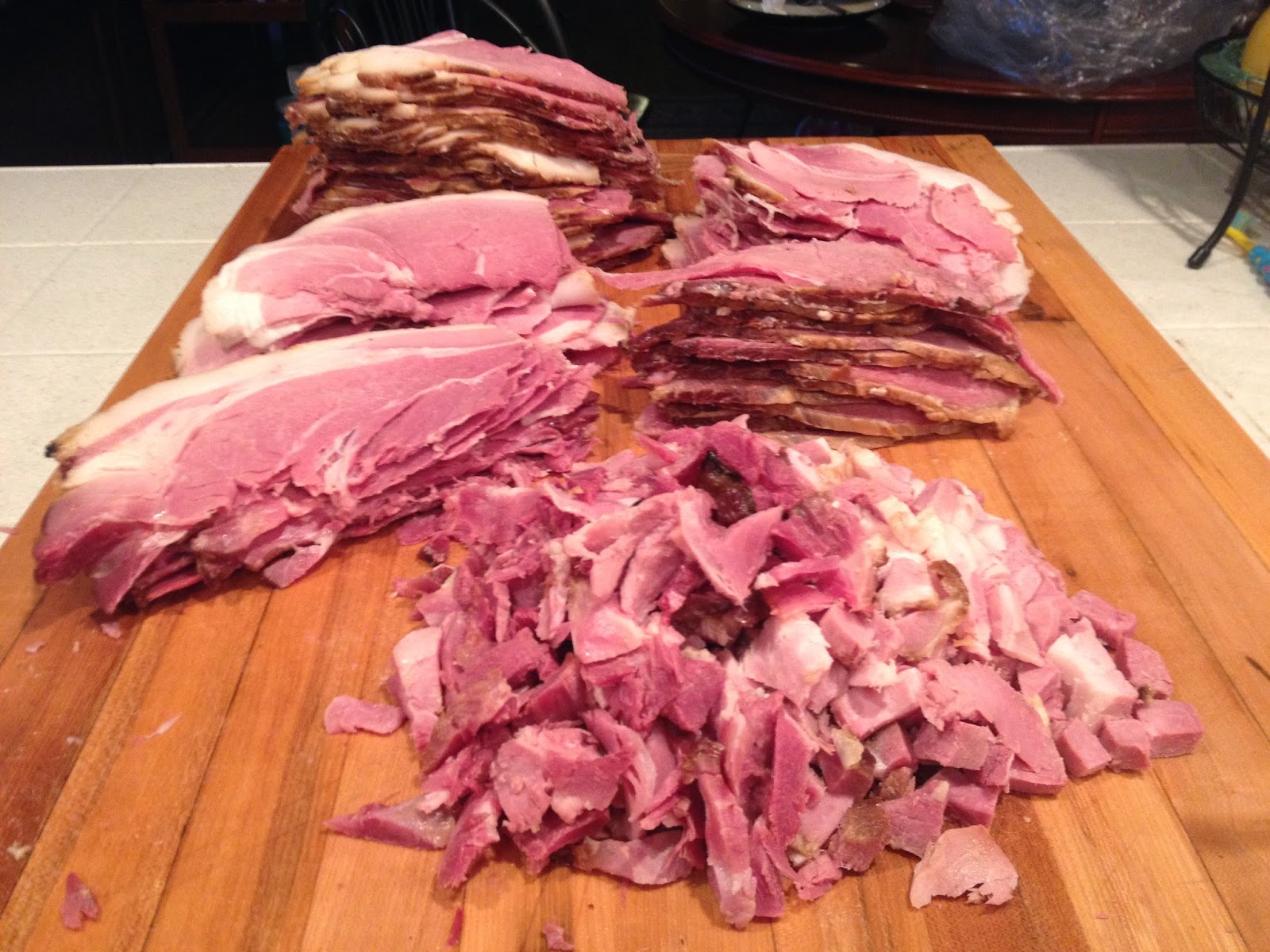 |
| Can you smell it? |
So its been four weeks. A long four weeks... Four weeks since that 18 lb ham went into the brine. I used
Pop's Brine recipe from The Smoking Meat Forums. I'd done some bacon in the same exact recipe and been pretty thrilled with the results.
The process consisted of mixing up the brine which was 1 cup of non-iodized table salt, 1 cup of brown sugar, 1 cup of regular sugar, and 1 ounce of Cure #1 pink salt (by pink salt, I DO NOT mean Himalayan salt - this is curing salts which is something totally different - google it if you are unsure what I mean) per gallon of cold water.
Then I did my best to inject brine along the bone lines. The idea being that you want the ham to cure from the inside out as well as from the outside in. Pop's recipe states that you should inject anything that is thicker than 2 inches or so. This ham certainly fit that bill. Along that line of thought, I injected quite a bit all over the place - since I was told that you can't really over cure by injecting too much.
I submerged the ham in about a gallon and a half of the brine and then weighted it down (to keep it underneath the liquid) with a big old liter beer mug (known as a
Maß) that made its way home with me from an evening at the Oktoberfest in Munich many moons ago. Some people will fill a big ziplock with water and close it to use as a weight - but after reading about one person whose bag opened and diluted the brine, I erred on the side of caution, even if it was somewhat undignified duty for the the trusty old glass mug.
A couple times through the brine process, I turned the ham in the brine to make sure that all surface area of the meat had ample time to be in contact with the cure. Dunno if it was necessary, but it certainly couldn't hurt.
 |
| Pardon the lousy novice butcher trimming job! |
I had noticed that the salt in the bacon I'd similarly brined was a bit high for my tastes. So... I thought I'd soak the ham a bit to see if I could take out a bit of the salt. Why I didn't slice off a piece and fry it up BEFORE soaking in fresh water is quite beyond me. That's the third time in a row I failed to do a test piece... talk about forgetting the basics! DUH!
So, I soaked in cold fresh water for about 24 hours with one water change in the middle.
Then, I removed the ham, patted as much of the liquid off as I could and put it uncovered in the fridge for about 36 hours to dry off and develop that tacky pellicle that is supposed to be helpful in getting the smoke to stick to the meat.
 |
| One by one pellet loading keeps your helper busy for HOURS! |
Then I had my faithful assistant load up the Amazen Pellet smoker with a mixture of hickory, cherry, and maple pellets. Its pretty dangerous work, hence the hard hat.
After that, I cold smoked in the Big Green Egg for about 10 hours. It was about 60 degrees outside and the internal temperature in the Egg never got above 70 so that certainly qualifies as cold smoking.
My original plan was to cold smoke it a while and then remove it and build a hot smoking fire in the Egg.
 |
| You can see a little bit of the brown color from the smoke |
However, it looked like the weather was going to get crappy and I didn't feel like building a fire in the rain. I figured that the ham already had some nice smoke on it so I'd just finish it in the oven.
One thing I did notice (and the same thing had happened to one of the slabs of bacon I'd cold smoked) was once the temp inside the Egg hit a certain point, the meat started to sweat. I am sure this has to do with ambient temperature, meat temperature, relative humidity, air circulation, and the airspeed velocity of unladen European swallows, but frankly I don't really care that much. I dobbed up the sweat with a paper towel and kept smoking.
 |
| Smells great! |
Once rain was imminent, I declared the cold smoking process "complete" (convenient, eh?) and brought the ham inside to the fridge and let it sit overnight.
**NOTE** If you place a piece of meat that has been smoked into your fridge for any period of time, your fridge will take on that lovely aroma for a long while.
The next day I cranked up the oven to 250 and cooked the ham until the internal temp was 155 degrees. This took quite a while (5 or 6 hours?). After a few hours, I pulled it out, scored the fat cap, and applied a maple-brown sugar glaze.
 |
| Pork candy! |
In hindsight, next time I may try to trim a little more of the fat off and try harder to keep a uniform fat cap. The fat tastes SO good that I want to make sure that there is some on every slice if I can help it. But I don't want so much of it on each slice that people have the urge to trim it off... because they'll trim more than they need to I think.
As I started to carve it up (talk about a hack job...), I noticed one small part (about the diameter of a quarter and about 2-3 inches long) that was gray. I've seen pictures of meat that have failed to cure all the way through and it looked just like that.
 |
| That little gray section is the culprit! |
You can see what I am talking about to the left. Basically, its where the brine failed to penetrate.
I smelled it and it smelled like cooked pork. That said, I generously trimmed around it and tossed that section in the trash. Given that this was a long cure (28 days), I was worried that if there was any section that wasn't cured completely that it might have soured but I didn't get that impression at all.
I'm pretty confident that it would have been safe to eat given that this was a large whole muscle cure and at no point did that section ever come into contact with air. And the fact that it was submerged in brine the entire time (aside from the smoking and cooking period), I can't imagine that the risk is high at all. That said, I didn't want to take any chances so I pitched it. Had this been a commercial operation, my guess is that they would have had to discard the entire ham... fortunately I'm not subjected to that kind of scrutiny. I will say that next time, I'll be even more diligent to ensure full brine penetration via injection.
 |
| Someone is hovering for scraps. |
So, after carving off enough for dinner (which was delicious by the way), I was faced with putting it into the form of slices for sandwiches.
Admittedly, having a meat slicer here helped quite a bit. I can see where having an even nicer meat slicer would be even better though as ours just isn't "cutting" it sometimes (HA!). It always manages to pull some of the bottom part of the meat downward and not slicing it evenly. This results in a lot of trim - which is okay in some instances because you can use those trimmings in other dishes.
 |
| Where's that loaf of rye bread? |
I diced up all the trimmings as best I could and we'll use those for omelettes, ham/potato hash, or maybe even ham salad.
I gotta admit that I'm looking forward to having some sandwiches with this stuff. What a great flavor and that fat tastes unlike anything I've ever had before. You really can just eat it by itself. Now I'm going to do more exploration of preparations that are done just with fat (lardo?) so I can leverage even more of that for the next hog we butcher. While we've really enjoyed all the lard we rendered out, skillet frying up a nice slab of cured fat sounds like something I really want to be a part of!
 |
| Holy Ham Batman! |
I wish I weighed everything up after I vacuum sealed it. I've eaten ham a couple of days for left overs from some of the larger chunks that I trimmed up.
So yeah, in hindsight, the only things I think I'll do different next time are;
- try to trim the fat more uniformly and a bit thinner
- be sure to inject like a banshee!
- fry up a test piece BEFORE I soak it
Aside from that, I got this ham thing down. Now, what do I do with this?
 |
| Split pea soup anyone? |




